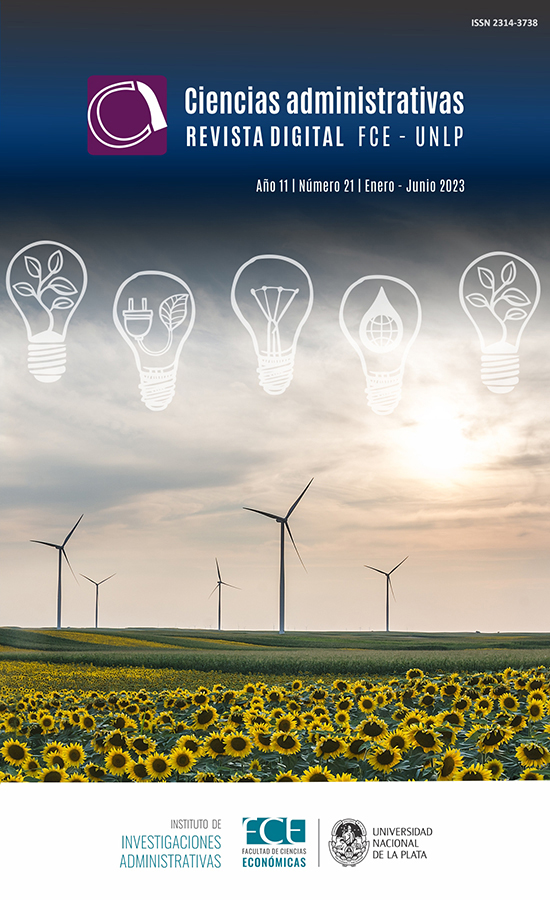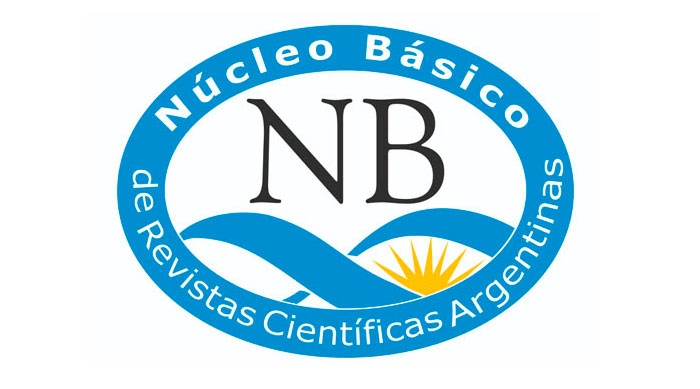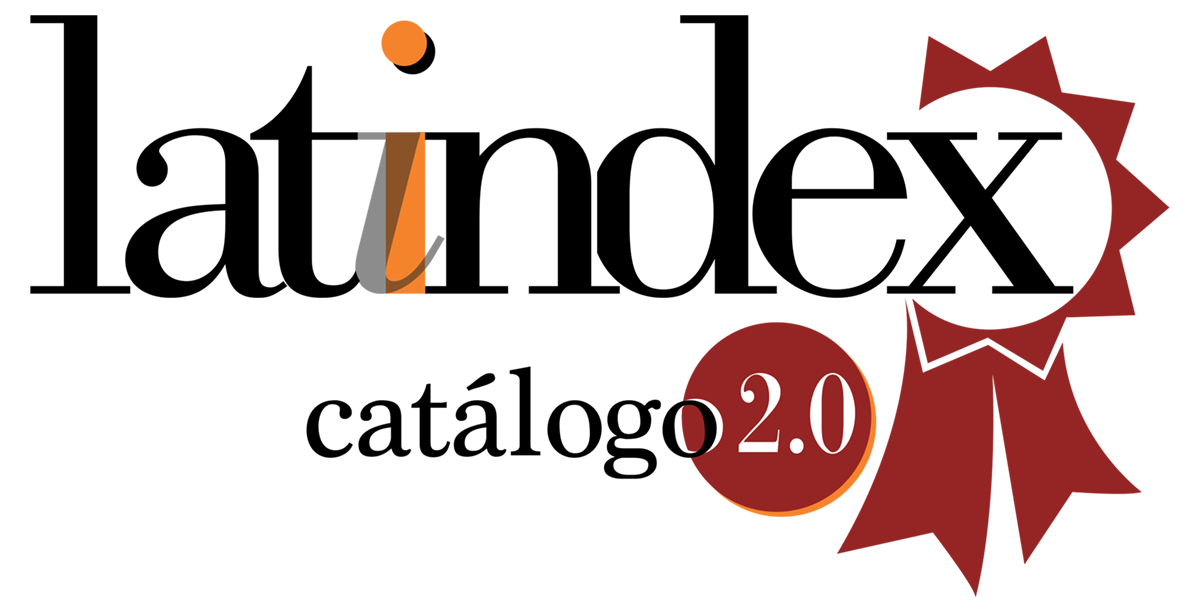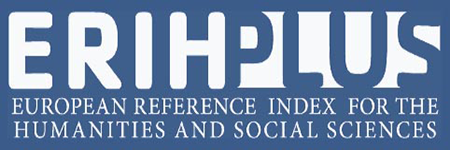Brecha entre teoría e interpretación de la Responsabilidad Social interna en los profesionales de Gestión Humana
DOI:
https://doi.org/10.24215/23143738e113Palabras clave:
responsabilidad social interna, profesionales, gestión humanaResumen
Como los profesionales de gestión humana juegan un rol preponderante en la aplicación de la Responsabilidad Social Interna, resulta de interés científico y práctico conocer cómo interpretan este concepto. Se elaboró una interpretación teórica del concepto mediante la revisión de publicaciones académicas y se construyó una batería de indicadores para medirla. Se aplicó un cuestionario a una muestra de miembros de una organización de profesionales de gestión humana en Uruguay. Se encontró que entre ellos coexisten diferentes formas de interpretar la Responsabilidad Social Interna y que una parte importante de ellos la interpretan de modo diferente a la interpretación teórica adoptada. Dado que numerosas investigaciones sobre Responsabilidad Social Interna se basan en el juicio de estos profesionales, se concluye en la necesidad de incluir su interpretación del concepto como variable de control. Además, se entiende pertinente evaluar la formación teórica que sobre este tema reciben estos profesionales en las universidades.
Descargas
Referencias
Acción Empresarial. (2001). Indicadores de Responsabilidad Social. Acción Empresarial.
Albinger, H. S. y Freeman, S. J. (2000). Corporate social performance and attractiveness as employer to different job seeking population. Journal of Business Ethics, 28, 243-253. https://doi.org/10.1023/A:1006289817941
Alves, R. y Mundim, R. (2008). Responsabilidad Social Empresarial con el público interno: la percepción de los empleados de una empresa brasileña. Revista Forum Doctoral, 1, 21-46.
Aragón, J. y Rocha, F. (2009). Los actores de la responsabilidad social empresarial: el caso español. Cuadernos de Relaciones Laborales, 27(1), 147-167. https://revistas.ucm.es/index.php/CRLA/article/view/CRLA0909120147A
Barrena-Martínez, J., López-Fernández, M. y Romero-Fernández, P. (2017). Socially responsible human resource policies and practices: Academic and professional validation. European Research on Management and Business Economics, 23(1), 55-61. https://doi.org/10.1016/j.iedeen.2016.05.001
Buciuniene, I. y Kazlauskaite, R. (2012). The linkage between HRM, CSR and performance outcomes. Baltic Journal of Management, 7(1), 5-24. https://doi.org/10.1108/17465261211195856
Carroll, A. (1991). The pyramid of corporate social responsibility: Toward the moral management of organizational stakeholders. Business Horizons, 34(4), 39-48. https://doi.org/10.1016/0007-6813(91)90005-G
Carroll, A. (1999). Corporate Social Responsibility: Evolution of Definitional Construct. Business and Society, 38(3), 268–295. https://doi.org/10.1177%2F000765039903800303
Carroll, A. (2015). Corporate social responsibility: The centerpiece of competing and complementary frameworks. Organizational Dynamics, 44(2), 87-96. https://doi.org/10.1016/j.orgdyn.2015.02.002
Dahlsrud, A. (2008). How Corporate Social Responsibility is defined: An Analysis of 37 Definitions. Corporate Social Responsibility and Environmental Management, 15(1), 1–13. https://doi.org/10.1002/csr.132
Davis, K. y Blomstrom, R. (1966). Business and its environment. McGraw- Hill.
De Paula, S. L., Da Silva, M. y Tscha, E. (20-22 de noviembre de 2011). A Percepção dos Profissionais Atuantes em Recursos Humanos sobre a Responsabilidade Social Empresarial [ponencia]. III Encontro de Gestao de Pessoas e Relacoes de Trabalho. https://www.researchgate.net/publication/319450626
Deres. (2001). Manual para la preparación e implementación del Balance Social en Uruguay. Deres.
Duque, Y. V. y Martínez, D. (2011). Responsabilidad social empresarial en la dimensión laboral: caso Bancolombia y BBVA. Revista Facultad De Ciencias Económicas, 20(1), 171-187. https://doi.org/10.18359/rfce.2191
Ethos. (2007). Indicadores Ethos de Responsabilidade Social. Ethos.
Fenwick, T. y Bierema, L. (2008). Corporate social responsibility: issues for human resource development professionals. International Journal of Training and Development, 12(1), 24-35. https://doi.org/10.1111/j.1468-2419.2007.00293.x
Ferreira, P. y Real de Oliveira, E. (2014). Does corporate social responsibility impact on employee engagement? Journal of Workplace Learning, 26(3/4), 232-247. http://dx.doi.org/10.1108/JWL-09-2013-0070
Fitch, G. (1976). Achieving corporate social responsibility. Academy of Management Review, 1(1), 38-46. https://doi.org/10.2307/257357
Freeman, E. y Reed, D.L. (1983). Stockholders and Stakeholders: A New Perspective on Corporate Governance. California Management Review, 25(3), 88-106. https://doi.org/10.2307%2F41165018
Gaete, R. (2010). Discursos de gestión de recursos humanos presentes en Iniciativas y Normas de responsabilidad social. Revista Gaceta Laboral, 16(1), 41 – 62.
García, M., Azuero, A. y Pelaez, J. (2013). Prácticas de Responsabilidad Social Empresarial desde las áreas funcionales de Gestión Humana: análisis de resultados en cuatro empresas del suroccidente colombiano. Innovar. Revista de Ciencias Administrativas y Sociales, 23(49), 83-100.
García Solarte, M. y Duque Ceballos, Y. (2012). Gestión humana y responsabilidad social empresarial: un enfoque estratégico para la vinculación de prácticas responsables a las organizaciones. Libre Empresa, 9(1), 13-37. https://doi.org/10.18041/1657-2815/libreempresa.2012v9n1.2965
Grueso Hinestroza, M. P. (2009). Responsabilidad social empresarial e igualdad de oportunidades en el empleo: ¿altruismo o legalidad? Revista Universidad & Empresa, 11(17), 244-251. https://revistas.urosario.edu.co/index.php/empresa/article/view/1091
Guzmán, M. (2016). Dimensión Interna de la Responsabilidad Social Empresaria desde la óptica de la Gestión de Recursos Humanos. Saber, Universidad de Oriente, Venezuela, 28(4), 794-805.
Hoffmeister Arce, L., Benavídez F.G. y Jódar, P. (2006). Responsabilidad Social Corporativa en Salud y Seguridad en el Trabajo: dimensiones, realidad y perspectivas. Cuadernos de Relaciones Laborales, 24(1), 183-198. https://revistas.ucm.es/index.php/CRLA/article/view/CRLA0606120183A
IARSE. (2005). Manual de Primeros pasos en RSE. IARSE.
Jaramillo, O. (2011). La dimensión interna de la responsabilidad social en las micro, pequeñas y medianas empresas del programa expo-pyme de la Universidad del Norte. Pensamiento y Gestión, 31, 167-195.
Khoury, G., Rostami, J. y Turnbull, P. (1999). Corporate Social Responsibility: Turning Words into Action. Conference Board of Canada.
Kok, P., Van der Wiele, T., McKenna, R. y Brown, A. (2001). Corporate Social Responsibility Audit within a Quality Management Framework. Journal of Business Ethics, 31(4), 285-297. https://doi.org/10.1023/A:1010767001610.
Licandro, O., Alvarado-Peña, L., Sansores, E. y Navarrete, J. (2019). Responsabilidad Social Empresaria: Hacia la conformación de una tipología de definiciones. Revista Venezolana de Gerencia, 24(85), 281-299. https://produccioncientificaluz.org/index.php/rvg/article/view/23843
Lichtenstein, D., Drumwright, M. y Braig, B. (2004). The Effect of Corporate Social Responsibility on Customer Donations to Corporate-Supported Nonprofits. Journal of Marketing, 68(4), 16-32. http://dx.doi.org/10.1509/jmkg.68.4.16.42726
Obeidat, B. (2016). Exploring the Relationship between Corporate Social Responsibility, Employee Engagement, and Organizational Performance: The Case of Jordanian Mobile Telecommunication Companies. International Journal Communications, Network and System Sciences, 9(9), 361-386. http://dx.doi.org/10.4236/ijcns.2016.99032
Ofenhejm, A. y Queiroz, A. (2019). Sustainable human resource management and social and environmental responsibility: An agenda for debate. Revista de Administração de Empresas, 59(5), 353-364. http://dx.doi.org/10.1590/S0034-759020190505
Organización Internacional de Normalización (2011). Guía de Responsabilidad Social (ISO 26.0000:2012, IDT). UNIT.
Perrini, F. (2005). Building a European Portrait of Corporate Social Responsibility Reporting. European Management Journal, 23(6), 611-627. https://doi.org/10.1016/j.emj.2005.10.008
Sánchez-Hernández, M. I., Gallardo-Vázquez, D., Barcik, A., y Dziwiński, P. (2016). The effect of the internal side of social responsibility on firm competitive success in the business services industry. Sustainability, 8(2), 179. https://doi.org/10.3390/su8020179
Steiner, G. (1971). Business and society. Random House.
Tovar, J. y de la Vega, B. (2009). Sobre el concepto de responsabilidad social de las empresas. Un análisis europeo comparado. Cuadernos de Relaciones Laborales, 27(1), 53-75. https://revistas.ucm.es/index.php/CRLA/article/view/CRLA0909120053A
Turker, D. (2009). How Corporate Social Responsibility Influences Organizational Commitment. Journal of Business Ethics,89, 189–204. https://doi.org/10.1007/s10551-008-9993-8
Voegtlin, C., y Greenwood, M. (2016). Corporate social responsibility and human resource management: A systematic review and conceptual analysis. Human Resource Management Review, 26(3), 181-197. https://psycnet.apa.org/doi/10.1016/j.hrmr.2015.12.003
Descargas
Archivos adicionales
Publicado
Número
Sección
Licencia
Derechos de autor 2022 Oscar Daniel Licandro Goldaracena

Esta obra está bajo una licencia internacional Creative Commons Atribución-NoComercial-CompartirIgual 4.0.
Aquellos autores/as que tengan publicaciones con esta revista, aceptan los términos siguientes:
- Los autores/as conservarán sus derechos de autor y garantizarán a la revista el derecho de primera publicación de su obra, el cuál estará simultáneamente sujeto a la Creative Commons Atribución-NoComercial-CompartirIgual 4.0 Internacional (CC BY-NC-SA 4.0) que permite a terceros compartir la obra siempre que se indique su autor y su primera publicación esta revista, no hagan uso comercial de ella y las obras derivadas de hagan bajo la misma licencia.
- Los autores/as podrán adoptar otros acuerdos de licencia no exclusiva de distribución de la versión de la obra publicada (p. ej.: depositarla en un archivo telemático institucional o publicarla en un volumen monográfico) siempre que se indique la publicación inicial en esta revista.
- Se permite y recomienda a los autores/as difundir su obra a través de Internet (p. ej.: en archivos telemáticos institucionales o en su página web) antes y durante el proceso de envío, lo cual puede producir intercambios interesantes y aumentar las citas de la obra publicada. (Véase El efecto del acceso abierto).





























